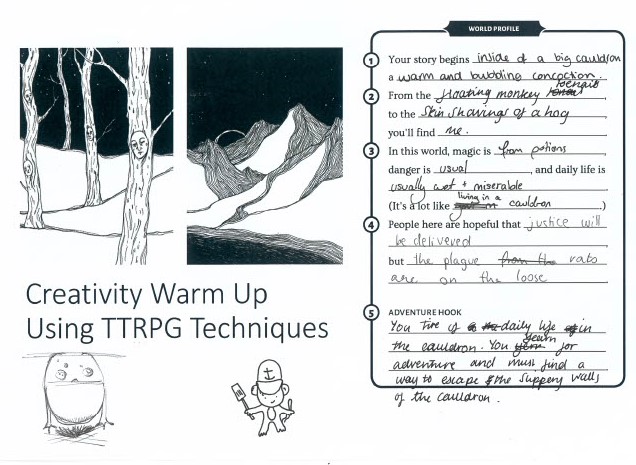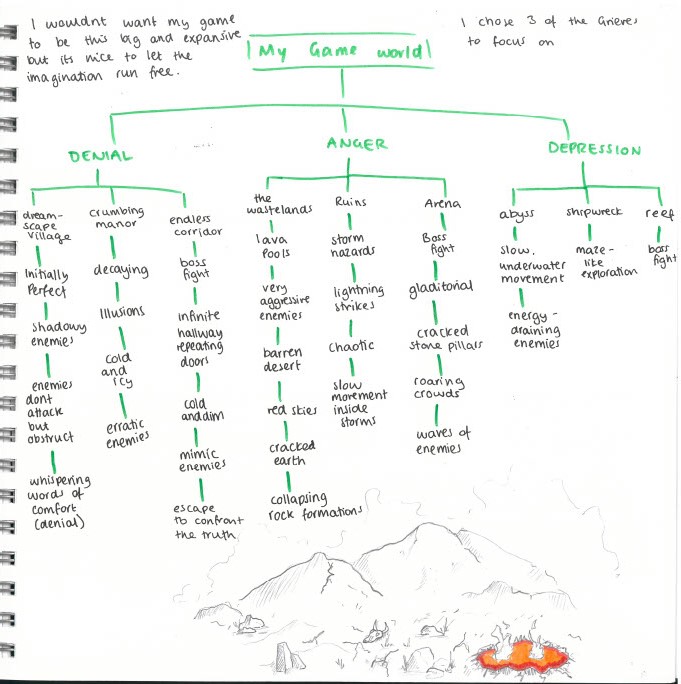This week was all about diving into worldbuilding and any and all techniques for creating impactful worlds in game design. To be clear, a game world can be defined as “A Dynamic System of Interconnected and Interdependent Variables.”. What I took from this is that a game world is a combination of various things, with it s own beliefs, entities, weather and culture, and therefore should enable meaningful player interaction.
For the world building workshop we had a look at tools like the world profile and the world bible. Joining up into teams we had a go at generating random small worlds, my group came up with an outrageous and silly fantasy world.


Game Spaces & World Building
Thursday lecture was we had our first guest speaker Oguz Doma, who meshed his architectural knowledge and experience with video games.
The speaker discussed the use of architecture as both a theme and context, which essentially meant the architecture of games tells us as the player a lot more than “oo pretty building!”, architecture is so much more than a background – it can describe time periods and world lore, enhance aesthetics and evoke emotion. Existing architecture can also be virtually reproduced to describe atmosphere.
One important thing to note about this lecture was the uniqueness of video games spaces and how they differentiate from other narrative media. Video games offer interaction, agency and flexible operational time within gameplay, which can’t be said for films and literature. One thing to remember is that 3D animation/simulation does not mean it is a video game, this is why it is significant for game designers to understand the fundamentals of play. However, just because games are unique, that doesn’t mean designers shouldn’t be using the real world as inspiration and reference, things need to be concise and well-thought out, this is why research is important!
We were tasked with producing triadic structures to breakdown our game world, we would select an area or region in a game world and outline the following features:
- Environment: Structures, landmarks, and general atmosphere.
- Gameplay Elements: Possible obstacles, enemy types, puzzles, or
interactions specific to the area. - Visual and Sensory Details: Lighting, color schemes, sounds, and
other sensory elements that define the area’s mood.
Because my idea was pretty fresh, I just let my imagination run loose and wrote down anything that felt right and could fit into my game world.

Then we had a look gameflow maps and level design. I struggled with this task quite a bit as I hadn’t developed a lot of details such as interactions and sensory elements, let alone a whole level to design. So, I used a bit of initiative and made use of the information in the far dusty corner of my mind where I stored all of my prior computer science knowledge, resulting in a concise use of abstraction and decomposition to produce a basic flowchart of my game.

While it wasn’t exactly a gameflow map, I think this flowchart will be very useful to refer to as development of my game continues. I would like to create a more advanced version of this flowchart so I can better identify segments where specific narrative and mechanics are concentrated, and to better indicate player goals.
Leave a Reply